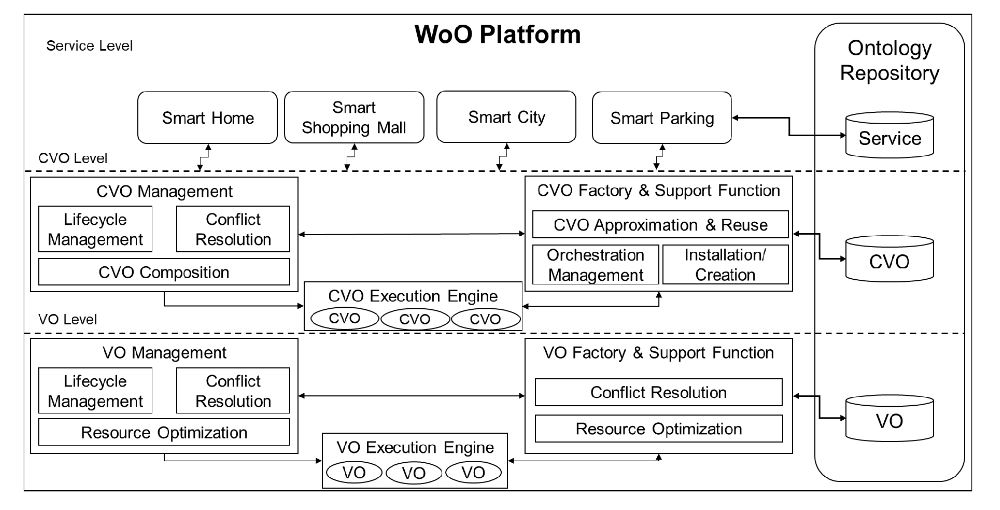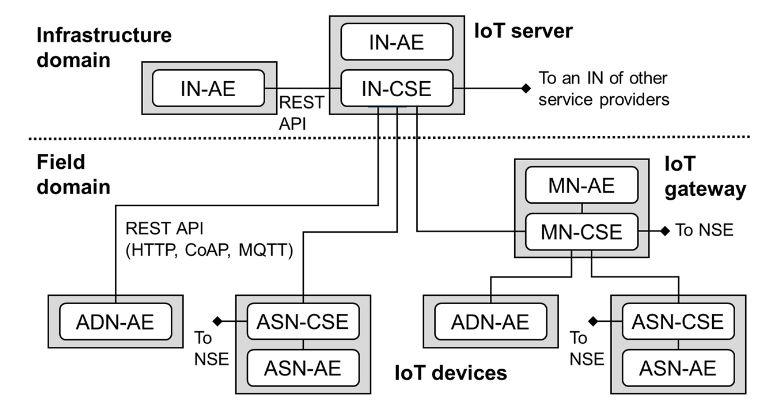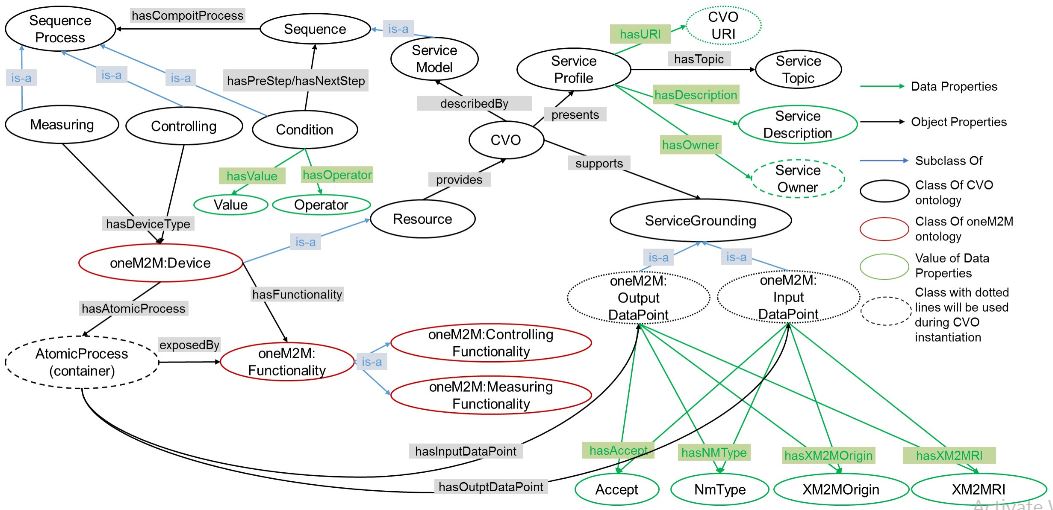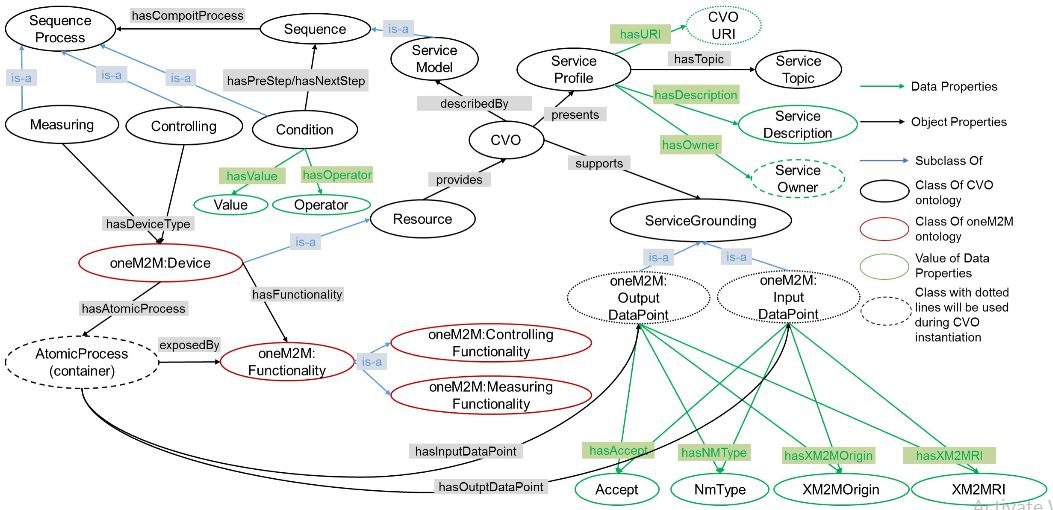ABSTRACT
An aging population and human longevity is a global trend. Many developed countries are struggling with the yearly increasing healthcare cost that dominantly affects their economy. At the same time, people living with old adults suffering from a progressive brain disorder such as Alzheimer’s disease are enduring even more stress and depression than those patients while caring for them. Accordingly, seniors ability to live independently and comfortably in their current home for as long as possible has been crucial to reduce the societal cost for caregiving and thus give family members peace of mind, called ‘aging in place’ (AIP).
In this paper we present a way of building AIP services using standard-based IoT platforms and heterogeneous IoT products. An AIP service platform is designed and created by combining previous standard-based IoT platforms in a collaborative way. A service composition tool is also created that allows people to create AIP services in an efficient way. To show practical usability of our proposed system, we choose a service scenario for medication compliance and implement a prototype service which could give old adults medication reminder appropriately at the right time (i.e., when it is time to need to take pills) through light and speaker at home but also wrist band and smartphone even outside the home.
BACKGROUND
Supporting elderly or disabled people in their everyday lives has been a longstanding research area, and in particular many research activities have exploited the topic of smart aging services, which can help people age comfortably and independently while staying in their current residence as long as possible. Chan et al presented an extensive survey on smart homes developed around the world including U.S., Asia, Europe, Australia, and New Zealand.
They categorized the functions which smart homes or systems are associated with into four categories: to support, to monitor, to deliver therapy, and comfort. Through the literature survey, the authors emphasized the requirement of a variety of sensing systems incorporated into wearable or implantable devices (i.e., sensor-embedded houses) for monitoring people without intervening their daily routines.
SYSTEM ARCHITECTURE FOR BUILDING IOT SERVICES

Figure 1. Functional overview of the Web of Objects (WoO) platform
Web of Objects (WoO) is based on an SOA-based conceptual architecture which considers real world objects and their functionality as virtual objects (VOs). In WoO, VO provides atomic functionalities which are used in composition to create new composite virtual objects (CVOs). Figure 1 shows a functional architecture of the WoO platform. The VOs, at the bottom of this functional architecture, represent the virtualized real world entities.

Figure 2. oneM2M reference architecture
The architecture of oneM2M standards is well described in the previously published literature, but we here briefly introduce it for better under standing of the advantages of oneM2M standards. Figure 2 shows the oneM2M reference architecture model whose environments are divided into two domains: infrastructure and field domain. There are four types of nodes defined: infrastructure node (IN) for the infrastructure domain, middle node (M N), application service node (ASN), application dedicated node (ADN) for the field domain.
SERVICE COMPOSITION USING VIRTUAL OBJECTS AND COMPOSITE VIRTUAL OBJECTS
A device configuration file contains the information of a device in Mobius. For instance, it contains an application ID, operating system, transport layer port, application protocol, host URL and port, container information, maximum limit of container instances, etc. The oneM2M annotator retrieves AE and container information from device configuration file and retrieves description about those AEs and containers from the device description file. The device description file is mapping between M2M Base Ontology and Mobious resources. Figure 5 shows the mapping procedure between oneM2M resources and oneM2M Base Ontology.
A composite virtual object or CVO in the AIP service platform comprises one or more virtual objects and a set of actions. To create a CVO, first we need a CVO template which consists of the types of VOs and set of actions. Here, actions are the functionalities that are exposed by VOs. The core of CVO template model is DAML-S service ontology and process ontology. Figure 9 illustrates a CVO template ontology model where VO ontology extends the OWL-S ontology and it is designed on protege. A CVO is equivalent to a service in the OWL-S top level service ontology.
SERVICE DEVELOPMENT FOR AGING IN PLACE

Figure 16. The pillbox with an NFC tag (left) and pillbox holder (right) consisting of a Raspberry Pi and NFC reader
An off-the-shelf pillbox is created using a normal pillbox attached with a simple NFC tag, which contain various information about pharmacy, prescription, medication directives and schedule. A pillbox holder consisting of a Raspberry Pi and NFC reader is created, which will read data from the NFC tag attached into the pillbox, and send it to the AIP service platform. Figure 16 shows the pillbox and pillbox holder implemented.

Figure 19. LIFX LED lightbulb (left), Musaic streaming speaker (middle), and Microsoft Band 2 (right)
We have deployed three types of actuators for our medication alarm service: LIFX, Musaic, and Microsoft Band 2, as shown in Figure 19. LIFX is an LED light bulb controlled remotely with a smartphone app via WiFi connection. Musaic is a speaker that can stream music in HiFi quality. Microsoft Band 2 is a wrist band can collect a variety of physical data from the body, for example acceleration of body movement, skin temperature, heart rate, and sleep quality. Unfortunately, Microsoft no longer has sold the band since 2016 and currently no plan on releasing new band. However, we have adopted the Microsoft band for our AIP service because it is supported by a fully functional set of application programming interfaces (APIs) that allow developers to build their own band applications like vibration alarm.
LIMITATIONS AND REMAINING CHALLENGES
In the platform architecture we propose, an IoT device is registered as resources. For example, when a temperature sensor is registered, its name, function, and value of data type are created each in the platform, which could be identified and accessed through their URIs. This is called resource-oriented architecture (ROA) and has widely adopted for various standard IoT platforms.
CONCLUSIONS
The growing elderly population is a worldwide issue. Many governments and local societies in the world are struggling with an increasing societal cost for public healthcare services. In particular, people living with old seniors having age-related diseases such as Alzheimer’s disease and dementia need to continuously monitor and help them perform activities in daily lives but also prevent them from being faced with emergency situations. Accordingly, to reduce the national and social burden of the healthcare for the elderly, a variety of research activities have been done under the name of aging in place technologies, which allow old adults to live independently in their current residence as long as possible.
Our work proposed in this paper is as part of the effort to help old adults to stay and live in their home with minimal assistance requested for their everyday lives. With our system, any heterogeneous IoT products could be connected in a standardized way, and people could build a wide variety of services with the service composition tool for aging in place (but also for any other service domains) using the functionalities of the IoT products. We envision that the proposed method consisting of the aging-in-place service platform and service composition tool will be able to contribute to reduce the increasing healthcare cost for elderly people but also give informal caregivers including family members and friends peace of mind.
Source: Soonchunhyang University
Authors: Sheik Mohammad Mostakim Fattah | Nak-myoung Sung | Il-yeup Ahn | Minwoo Ryu | Jaeseok Yun
>> 200+ IoT Led Engineering Projects for Students

